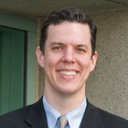Small acoustic neuromas: surgical outcomes versus observation or radiation.
キーワード
概要
OBJECTIVE
Evaluate factors affecting outcomes of small acoustic neuroma (AN) removal via a middle cranial fossa (MCF) approach, and compare results to published data on observation and radiation therapy.
METHODS
Retrospective chart review.
METHODS
Academic tertiary referral center.
METHODS
162 consecutive patients (ages 19-70) with unilateral AN (0.2-2.5 cm in largest dimension) removed through a MCF approach were reviewed focusing on preservation of hearing, facial nerve function and complications. One hundred thirteen patients had pre-operative word recognition scores (WRS)>70%.
RESULTS
Both tumor size and pre-operative WRS were related to post-operative WRS (p<0.01). Overall, at least some hearing was preserved in 94 (60%) of the 156 patients who had hearing before surgery. If the WRS was also >70% (N=113), 56 (50%) maintained WRS>70%. Importantly, WRS for 12 others improved to >70% after surgery. When the patients were stratified by tumor size, the patients with small tumors (2-10 mm) faired better than the overall group. At least some hearing was preserved in 65 (72%) of the 90 patients. If the WRS was also >70% (N=66), 39 (59%) maintained WRS>70%. WRS for eight others improved to >70% after surgery. When the tumor was 1.1-1.4 cm (N=34), the chance of preserving some hearing decreased to 42% (14/33). If the WRS was also >70% (N=23), 9 (39%) maintained WRS>70%. WRS for three others improved to >70% after surgery. When the tumor reached 1.5-2.5 cm (N=35), the hearing preservation rate was 43%. If the WRS was also >70% (N=24), only eight (33%) maintained WRS of 70%, and one other improved to >70%. The addition of intra-operative whole eighth nerve near field monitoring improved results during small tumor ( CONCLUSIONS Our results suggest that removal of unilateral AN through an MCF approach when the tumor is small and hearing is good provides the best opportunity for hearing preservation and normal facial nerve function. Observation historically results in tumor growth in young and middle-age patients with subsequent hearing loss. Radiation may prevent most tumors from growing, and more data are needed to determine long-term tumor control and hearing preservation rates.




